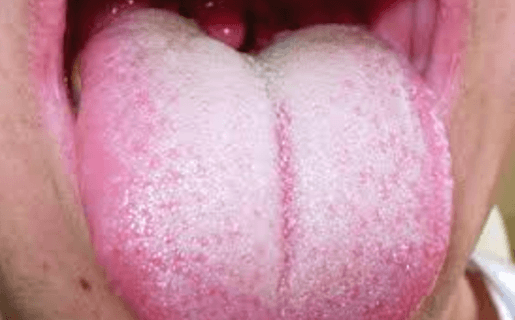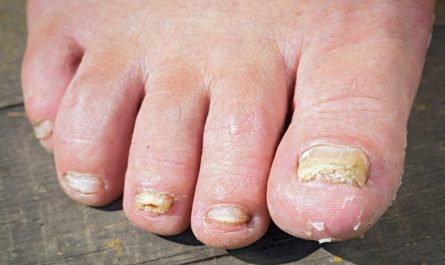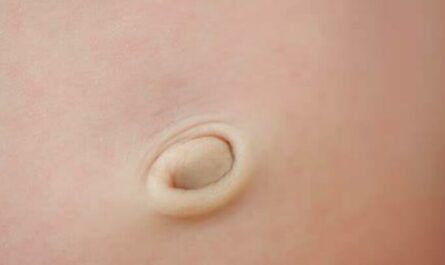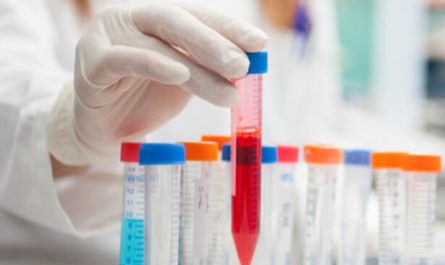The tongue is an essential organ that aids in speech, taste, and swallowing. It is normal for the tongue to have various bumps and textures, but sometimes, bumps on the back of the tongue can raise concerns. In this comprehensive guide, we will delve into the causes, symptoms, and treatments for bumps on the back of your tongue. While most cases are harmless and resolve on their own, it’s essential to understand when to seek medical advice and how to promote oral health.
What Are Bumps on the Back of the Tongue?
The bumps on the back of your tongue are often a result of lingual papillae, which are small structures that contain taste buds. There are different types of papillae on the tongue, each serving a specific function. The most common types found on the back of the tongue are circumvallate papillae, fungiform papillae, and filiform papillae.
Circumvallate papillae are larger, round bumps located at the back of the tongue in a V-shaped pattern. They contain taste buds and play a role in detecting bitter flavors. These papillae are normal and should not cause concern.
Fungiform papillae are mushroom-shaped bumps scattered across the tongue’s surface, including the back. They also contain taste buds and help with taste perception.
Filiform papillae are tiny, thread-like structures on the tongue. They do not contain taste buds and are responsible for texture sensations rather than taste.

Common Types of Bumps on the Tongue
Transient lingual papillitis, often referred to as “lie bumps,” is a common condition characterized by small, painful bumps on the tongue. Despite their discomfort, these bumps are generally harmless and tend to resolve on their own within a few days.
The exact cause of transient lingual papillitis is unknown, but it is believed to be associated with local irritation, such as accidental biting of the tongue or hot foods.
In addition to transient lingual papillitis, other types of bumps can occur on the back of the tongue, including:
- Enlarged papillae: Sometimes, the papillae on the back of the tongue can become enlarged, causing bumps to appear. This can be due to various factors, such as irritation, inflammation, or infection.
- Tongue ulcers: Ulcers on the tongue can also present as bumps. These painful sores can be caused by a variety of factors, including trauma, viral infections, or autoimmune conditions.
It’s important to note that while most bumps on the back of the tongue are benign, any persistent or concerning symptoms should be evaluated by a healthcare professional.
Are Bumps on the Back of Your Tongue Normal?
Yes, bumps on the back of the tongue are typically normal and should not be a cause for alarm. The presence of lingual papillae, including circumvallate, fungiform, and filiform papillae, is part of the tongue’s natural anatomy. However, it’s essential to differentiate normal bumps from those that indicate underlying health concerns.
While most bumps on the back of the tongue are harmless, there are a few conditions that can cause abnormal bumps. These include:
- Oral thrush: A fungal infection caused by an overgrowth of Candida yeast in the mouth. It can appear as white patches or bumps on the back of the tongue and other areas of the mouth.
- Oral lichen planus: An inflammatory condition that can affect the lining of the mouth, including the tongue. It can cause white, lacy patches or raised bumps on the tongue.
- Oral cancer: In rare cases, bumps on the back of the tongue may be a sign of oral cancer. It’s important to note that oral cancer is relatively uncommon, but it’s crucial to seek medical attention if you have persistent, unexplained bumps or other concerning symptoms.
If you are unsure whether the bumps on the back of your tongue are normal or abnormal, it’s best to consult a healthcare professional for an accurate diagnosis.
Potential Causes of Bumps on the Back of the Tongue
Bumps on the back of the tongue can be caused by various factors, including:
Viral infections
Infections such as oral herpes or HPV (human papillomavirus) can lead to the formation of bumps on the tongue. Oral herpes, caused by the herpes simplex virus, can result in painful sores or blisters on the tongue, lips, or other areas of the mouth. HPV can cause raised bumps or warts on the tongue, which may or may not be painful.
Bacterial infections
Conditions like strep throat or other bacterial infections can cause bumps and inflammation on the tongue. Streptococcal bacteria, responsible for strep throat, can lead to red and swollen bumps on the back of the tongue.
Inflammatory conditions
Glossitis, which is the inflammation of the tongue, and geographic tongue, characterized by irregular patches on the tongue’s surface, can both result in bumps.
Glossitis can cause the tongue to appear smooth and swollen, with enlarged papillae creating a bumpy texture. Geographic tongue, on the other hand, presents as irregular, smooth patches surrounded by raised white or red borders.
Allergic reactions
Certain foods, medications, or oral care products can trigger allergic reactions, leading to the development of bumps on the tongue. Allergic reactions can cause the tongue to swell, resulting in the appearance of bumps.
Nutritional deficiencies
Inadequate intake of essential vitamins and minerals, such as iron, vitamin B12, or folate, can contribute to tongue abnormalities. These deficiencies can manifest as bumps, soreness, or changes in the tongue’s appearance.
Gastrointestinal issues
Conditions like acid reflux or gastroesophageal reflux disease (GERD) can cause bumps or irritation on the back of the tongue due to acid exposure. The acid reflux of stomach contents into the mouth can irritate the tongue, leading to the formation of bumps.
Lifestyle Factors That Can Cause or Worsen Bumps
Certain lifestyle factors can contribute to the development or exacerbation of bumps on the back of the tongue. These include:
- Tobacco use: Smoking or chewing tobacco can irritate the tongue and lead to the formation of bumps. The chemicals in tobacco products can cause inflammation and damage to the delicate tissues of the tongue, resulting in bumps or sores.
- Excessive alcohol consumption: Alcohol can dehydrate the tongue and contribute to tongue issues. Dehydration can lead to dryness and irritation of the tongue, potentially causing bumps or discomfort.
- Spicy or acidic foods: Consuming excessively spicy or acidic foods can irritate the tongue and cause bumps or discomfort. These foods can trigger inflammation and sensitivity, leading to the formation of bumps or the exacerbation of existing ones.
- Poor oral hygiene practices: Inadequate oral hygiene can lead to bacterial overgrowth and tongue-related problems. Failing to brush and floss regularly can allow bacteria to accumulate on the tongue’s surface, potentially causing bumps or other oral health issues.
To minimize the risk of bumps on the back of your tongue, it’s important to practice good oral hygiene, avoid tobacco and excessive alcohol consumption, and limit your intake of spicy or acidic foods. Additionally, staying hydrated by drinking an adequate amount of water throughout the day can help maintain the health of your tongue and oral tissues.

Home Remedies for Bumps on the Back of Tongue
1. Baking Soda
Baking soda is an excellent home remedy for treating canker sores. Its healing properties can help alleviate pain and inflammation associated with the affected area of the tongue.
To use baking soda for canker sores, create a thick paste by mixing one teaspoon of baking soda with water.
Apply the paste to the affected area and leave it on for a few minutes before rinsing your mouth with water. Repeat this process twice a day until the sore has healed completely.
2. Witch Hazel
Witch hazel is a natural antiseptic and astringent that can help heal sore bumps on the back of the tongue. It contains antimicrobial properties that can reduce the size of cold sores.
To make a witch hazel mouthwash, mix one teaspoon of witch hazel with warm water. Add 1-2 drops of clove oil and use the mixture to gargle, ensuring that it reaches the back of the tongue and throat. Gargle twice a day to speed up the healing process.
3. Coconut Oil
Coconut oil has antimicrobial properties that can combat candida yeast infections, which are responsible for oral thrush. A study published in the Journal of Medicinal Food found that coconut oil is as effective as fluconazole, a popular pharmaceutical drug for treating yeast infections.
To make an anti-fungal mouthwash, mix 1-2 drops of cinnamon oil with a tablespoon of virgin coconut oil.
Swish the mixture in your mouth for 20 minutes, then spit it out and brush your teeth as usual. Repeat daily until the oral thrush on your tongue has cleared.
4. Apple Cider Vinegar
Raw apple cider vinegar, with its antifungal and antibacterial properties, can also be used to treat oral thrush, canker sores, and cold sores.
Mix two teaspoons of raw apple cider vinegar and half a teaspoon of salt in a cup of warm water. Gargle with the mixture to get rid of bumps on the back of your tongue. Repeat this process 2-3 times a day until the bumps have disappeared.
5. Stress Management
Stress can exacerbate underlying causes of bumps on the back of the tongue, such as cold sores, canker sores, and candida infections.
Finding effective stress relief methods can help reduce the occurrence of these bumps. You can consider incorporating natural stress relief remedies into your daily routine, such as exercise, meditation, deep breathing exercises, or aromatherapy.
Other Self-Care for Bumps on the Tongue
In many cases, bumps on the back of the tongue will resolve on their own without specific treatment. However, there are several self-care measures you can take to alleviate discomfort and promote healing:
- Maintain good oral hygiene: Brush your teeth and tongue twice a day using a soft-bristle toothbrush. Gently brush the surface of your tongue to remove any debris or bacteria that may contribute to the development of bumps.
- Use a tongue scraper: Consider using a tongue scraper to gently remove any debris or bacteria from the surface of the tongue. This can help improve oral hygiene and reduce the risk of developing bumps.
- Rinse your mouth with warm saltwater: Prepare a saltwater solution by dissolving half a teaspoon of salt in a glass of warm water. Rinse your mouth with this solution for about 30 seconds to a minute, then spit it out. This can help reduce inflammation and promote healing.
- Avoid irritants: Stay away from tobacco products and limit your consumption of spicy or acidic foods and beverages. These can irritate the tongue and potentially worsen or prolong the presence of bumps.
- Stay hydrated: Drink an adequate amount of water throughout the day to keep your mouth and tongue hydrated. This can help maintain the health of your tongue and promote healing.
It’s important to note that home remedies and self-care measures may provide temporary relief, but they may not address the underlying cause of the bumps. If your symptoms persist, worsen, or cause significant discomfort, it’s advisable to seek medical advice for a proper diagnosis and appropriate treatment.
Professional Treatments for Bumps on the Tongue
If the bumps on the back of your tongue persist or cause significant discomfort, your healthcare provider may recommend specific treatments. The recommended course of action will depend on the underlying cause of the bumps. Some potential treatments include:
- Antiviral or antifungal medications: If viral or fungal infections are the cause of the bumps, your healthcare provider may prescribe antiviral or antifungal medications to address the underlying infection.
- Antibiotics: If bacterial infections are suspected, your healthcare provider may prescribe antibiotics to treat the infection and alleviate the associated symptoms.
- Prescription mouth rinses or gels: In certain cases, your healthcare provider may recommend prescription mouth rinses or gels to reduce inflammation or alleviate pain associated with the bumps on the back of your tongue. These topical treatments may provide relief and aid in the healing process.
- Oral corticosteroids: In cases where severe inflammation or allergic reactions are causing the bumps on the tongue, your healthcare provider may prescribe oral corticosteroids. These medications can help reduce inflammation and alleviate symptoms.
- Referral to a specialist: In some instances, your healthcare provider may refer you to a specialist, such as an ear, nose, and throat (ENT) specialist or a gastroenterologist, for further evaluation and treatment. These specialists have expertise in diagnosing and managing conditions that affect the tongue and can provide tailored treatment options.
It’s important to follow your healthcare provider’s recommendations and complete any prescribed treatments or medications to ensure the best possible outcome.
Can I pop the bumps on the back of my tongue?
It is not recommended to pop the bumps on the back of your tongue. Popping them can lead to further inflammation, pain, and potential infection. It’s best to let the bumps heal naturally or seek advice from a healthcare professional.
Are bumps on the back of the tongue contagious?
Bumps on the back of the tongue are not contagious. However, certain conditions that cause these bumps, such as oral herpes or strep throat, can be contagious. It is important to take necessary precautions and seek medical attention if needed.
When Should You Worry About Bumps on the Back of Your Tongue?
While bumps on the back of the tongue are typically harmless, certain symptoms may indicate a more serious condition. If you experience any of the following, it is advisable to seek medical advice:
- Persistent pain or discomfort: If the bumps on the back of your tongue are causing ongoing pain or discomfort that interferes with daily activities, it’s important to consult a healthcare professional for evaluation.
- Difficulty swallowing or speaking: If the bumps on your tongue are making it difficult to swallow food or liquids, or if you experience difficulty speaking, it may indicate a more significant issue that requires medical attention.
- Unexplained bleeding: If you notice any unexplained bleeding from the bumps on the back of your tongue, it’s essential to seek immediate medical attention. While oral bleeding can be caused by minor issues such as accidental biting, it can also be a sign of a more serious condition.
- Rapidly spreading or changing bumps: If the bumps on the back of your tongue are rapidly spreading or changing in appearance, it’s important to have them evaluated by a healthcare professional to rule out any underlying health concerns.
- Development of ulcers or sores: If the bumps on your tongue develop into painful ulcers or sores that do not heal within a reasonable timeframe, it’s crucial to seek medical advice. Persistent ulcers or sores may require further evaluation to rule out underlying conditions, such as oral cancer.
Remember, if you have any concerns about the bumps on the back of your tongue, it’s always best to consult a healthcare professional for an accurate diagnosis and appropriate treatment.






